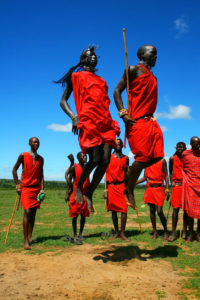Nonverbal research has discovered that rapport is physical. Subliminal signals are sent body to body. In ordinary life, we feel the effect of these bodily signals – of mirroring positions, or echoing actions, or subtle synchronization of small motions – without perceiving them to be the cause of feelings of rapport. In dance, the cause is much more obvious.

Dance makes patterns in time and space. Dancing with others requires coordinating these patterns, keeping together in space and time. All forms of dance use symmetry and synchrony to create patterns. In other words, dance generates rapport between people. Far from being a trivial pastime, dance is a critical aspect of community building.
This has led McNeill to conclude that dance “was fundamental in widening and differentiating social bonds among our species.” In early human history, he believes that festival dances “strengthened and stabilized” small, isolated communities. Rhythmic exertion in work “facilitated the performance of dull, repetitive tasks.”
As human societies became larger and more complex, “public rituals involving rhythmic movement regularly helped to confirm constituted authorities.” At the same time, subgroups “availed themselves of the emotional uplift of dancing together to define and strengthen their differing identities as well.”
McNeill closes with the following comments: “The practical efficiency and emotional residues of moving together in time influenced the human past in ways seldom noticed and imperfectly recorded. Yet defects of surviving records ought not to prevent more careful, critical consideration of this dimension of human sociality.”

 “You must not think of dance as steps,” Rudolf Laban once told a group of student actors. “Dance is meaningful movement. You can dance with your eyebrows. When I have taught you, you will be able to dance with any part of your body.’’
“You must not think of dance as steps,” Rudolf Laban once told a group of student actors. “Dance is meaningful movement. You can dance with your eyebrows. When I have taught you, you will be able to dance with any part of your body.’’